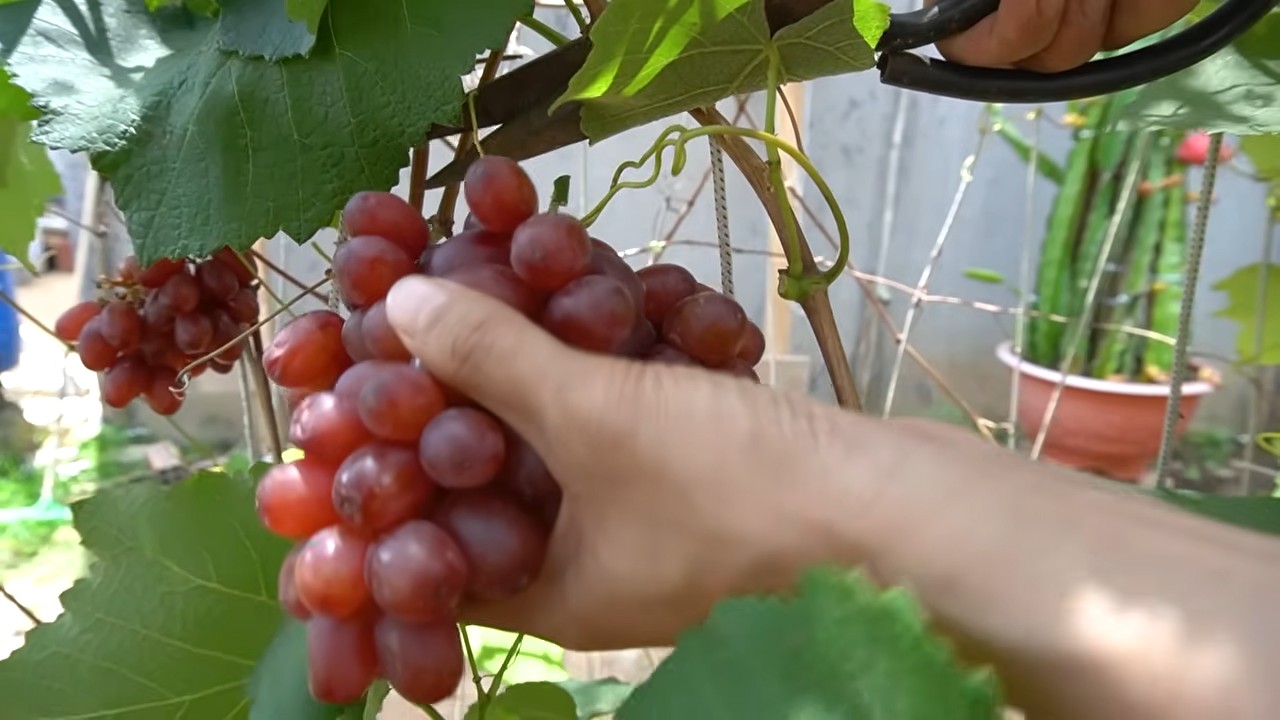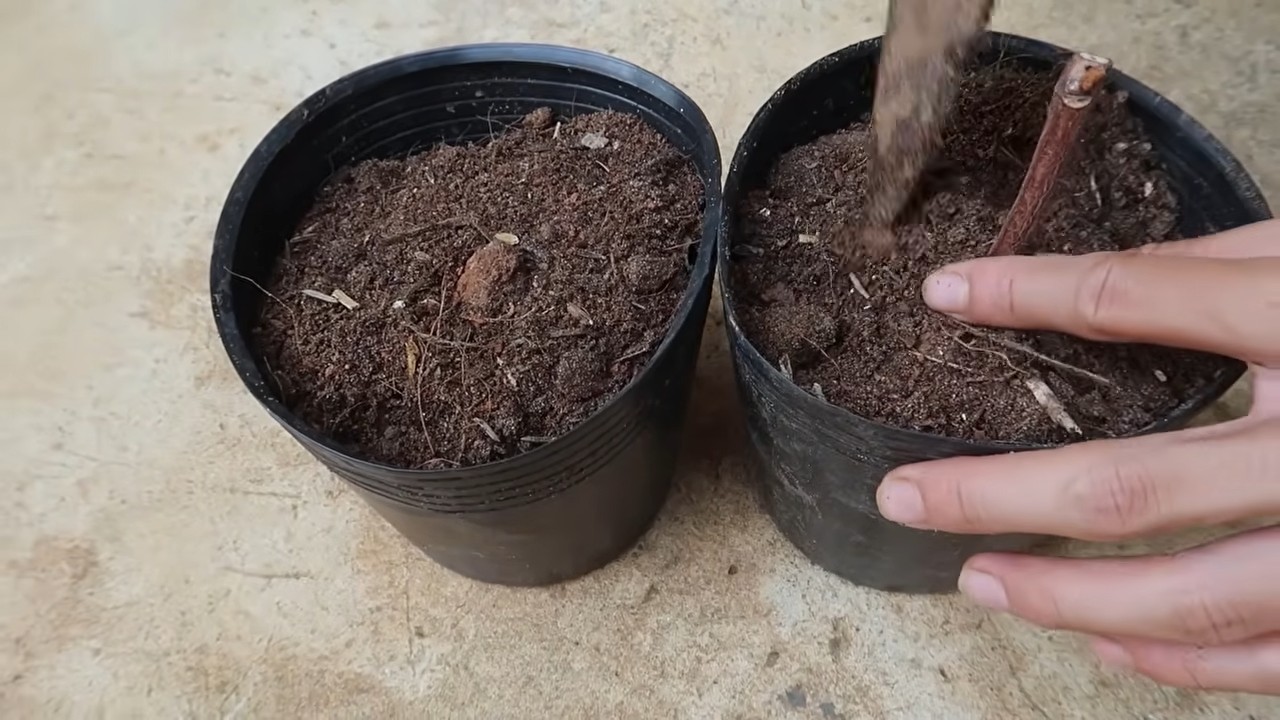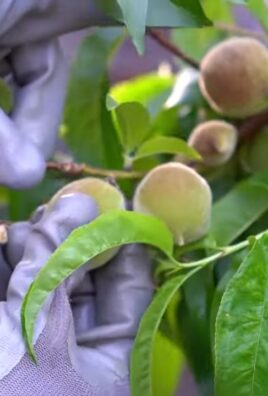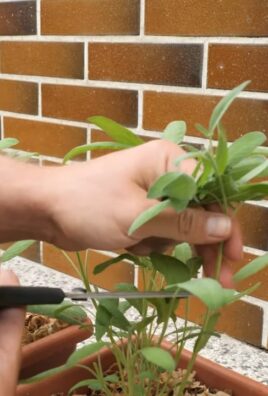Backyard grapes health benefits are more accessible than you might think! Have you ever dreamed of strolling through your own little vineyard, plucking juicy, sun-ripened grapes straight from the vine? It’s not just a romantic fantasy 鈥?it’s a very achievable reality with a little know-how. For centuries, grapes have been cultivated and cherished, not only for their delicious taste but also for their remarkable health-boosting properties. From ancient civilizations using grapes for medicinal purposes to the modern-day appreciation of their antioxidant power, these little fruits have a rich and fascinating history.
But beyond the historical significance, why should you consider growing grapes in your backyard? Well, imagine having a constant supply of fresh, organic grapes right at your fingertips. No more questionable supermarket produce 鈥?just pure, natural goodness. And the best part? You can unlock the amazing backyard grapes health benefits without breaking the bank or needing a green thumb of professional proportions. This DIY guide will provide you with simple, effective tricks and hacks to cultivate thriving grapevines, ensuring you reap the rewards of this incredible fruit. I’m excited to share these tips with you, so let’s get started!

DIY Backyard Grape Trellis: From Seedling to Stunning Vineyard
Okay, grape lovers! Ever dreamed of plucking juicy grapes right from your own backyard? I know I have! And guess what? It’s totally achievable with a little DIY spirit and this guide to building your own grape trellis. We’re going to transform your backyard into a mini-vineyard, one delicious grape at a time.
Why Build a Grape Trellis?
Before we dive in, let’s quickly chat about why a trellis is so important for grapes.
* Support: Grape vines are climbers. They need a structure to support their weight and sprawling growth. Without a trellis, they’ll just sprawl on the ground, making them susceptible to diseases and pests.
* Air Circulation: A trellis lifts the vines off the ground, improving air circulation. This helps prevent fungal diseases like powdery mildew, which can ruin your harvest.
* Sunlight Exposure: Trellising allows for better sunlight penetration to all parts of the vine, leading to more even ripening and sweeter grapes.
* Ease of Harvesting: Trust me, picking grapes from a tangled mess on the ground is no fun. A trellis makes harvesting a breeze.
* Aesthetics: Let’s be honest, a well-built grape trellis looks beautiful! It adds a touch of rustic charm to your garden.
Planning Your Trellis: Size, Location, and Materials
Before you start hammering and sawing, let’s plan! This is crucial for a successful and long-lasting trellis.
* Location, Location, Location: Grapes need at least 6-8 hours of direct sunlight per day. Choose a sunny spot in your yard with well-draining soil. Also, consider the mature size of your grape variety. Some vines can grow quite large!
* Trellis Size: The size of your trellis will depend on the number of grapevines you plan to grow and the variety. A good starting point is a trellis that’s 6-8 feet tall and 8-10 feet long per vine. You can always expand later!
* Trellis Design: There are many different trellis designs to choose from. We’ll be focusing on a simple, sturdy, and cost-effective design using wooden posts and wire. This is a great option for beginners.
* Materials: Here’s what you’ll need:
* Wooden Posts: Pressure-treated 4×4 lumber is ideal. The length will depend on your desired trellis height. For an 8-foot trellis, you’ll need 10-foot posts (2 feet will be buried in the ground). You’ll need at least two end posts and intermediate posts every 8-10 feet.
* Wire: 12-gauge galvanized steel wire is strong and durable. You’ll need enough to run several horizontal wires along the length of the trellis.
* Concrete Mix: For setting the posts securely in the ground.
* Eye Bolts or Screw Eyes: To attach the wire to the posts.
* Wire Tensioners (Optional): These make it easier to tighten the wire and keep it taut.
* Tools: Post hole digger or shovel, level, measuring tape, drill, wrench, wire cutters, hammer, safety glasses, gloves.
Building Your Grape Trellis: Step-by-Step
Alright, let’s get building! This is where the fun begins. Remember to always wear safety glasses and gloves when working with tools.
Phase 1: Setting the Posts
This is the most important part of the project. Solid posts are the foundation of your trellis.
1. Mark the Post Locations: Use a measuring tape and stakes to mark the locations of your posts. Remember to space them 8-10 feet apart.
2. Dig the Post Holes: Use a post hole digger or shovel to dig holes that are at least 2 feet deep. The diameter of the holes should be about 3 times the width of the posts.
3. Position the Posts: Place the posts in the holes. Use a level to ensure they are perfectly vertical. This is crucial for a straight and sturdy trellis.
4. Pour Concrete: Mix the concrete according to the manufacturer’s instructions. Pour the concrete into the holes around the posts, filling them to within a few inches of the ground.
5. Tamp the Concrete: Use a shovel or piece of wood to tamp the concrete down, removing any air pockets.
6. Slope the Concrete: Create a slight slope away from the post with the concrete. This will help water drain away and prevent the wood from rotting.
7. Let the Concrete Cure: Allow the concrete to cure for at least 48 hours before proceeding to the next step. This is essential for the concrete to reach its full strength.
Phase 2: Attaching the Wire
Now that the posts are securely in place, it’s time to string the wire.
1. Drill Holes for Eye Bolts: Drill holes through the posts at the desired heights for your wires. A good starting point is to have the first wire about 18 inches above the ground, and then space the remaining wires 12-18 inches apart.
2. Install Eye Bolts or Screw Eyes: Insert the eye bolts or screw eyes into the holes. Tighten them securely with a wrench.
3. String the Wire: Thread the wire through the eye bolts or screw eyes, starting at one end of the trellis and working your way to the other.
4. Tighten the Wire: This is where wire tensioners come in handy. Attach them to the wire at one end of the trellis and use a wrench to tighten the wire. If you don’t have tensioners, you can simply pull the wire taut and secure it to the eye bolts.
5. Secure the Wire: Once the wire is taut, wrap it around the eye bolts several times and then twist the end of the wire back onto itself to secure it.
6. Repeat for All Wires: Repeat steps 3-5 for all the remaining wires.
Planting Your Grapes
With your trellis complete, it’s time to plant your grapevines!
1. Choose Your Grape Variety: Select a grape variety that is well-suited to your climate and growing conditions. Local nurseries can provide valuable advice. Consider disease resistance and desired fruit characteristics (table grapes, wine grapes, etc.).
2. Prepare the Soil: Dig a hole that is twice as wide and as deep as the root ball of your grape vine. Amend the soil with compost or other organic matter to improve drainage and fertility.
3. Plant the Grapevine: Gently remove the grapevine from its container and loosen the roots. Place the grapevine in the hole, ensuring that the top of the root ball is level with the ground.
4. Backfill the Hole: Fill the hole with soil, gently tamping it down around the roots.
5. Water Thoroughly: Water the grapevine thoroughly after planting.
6. Mulch: Apply a layer of mulch around the base of the grapevine to help retain moisture and suppress weeds.
Training Your Grapevines
Training your grapevines is essential for maximizing fruit production and maintaining a healthy vine.
1. Choose a Training System: There are several different training systems to choose from. A popular option for backyard growers is the “cordon” system, where the main trunk of the vine is trained horizontally along the bottom wire of the trellis.
2. Train the Trunk: As the grapevine grows, select the strongest shoot and train it vertically towards the bottom wire of the trellis. Use twine or soft ties to secure the shoot to the wire.
3. Establish the Cordon: Once the shoot reaches the bottom wire, train it horizontally along the wire in one or both directions. This will become the cordon, the main framework of the vine.
4. Prune Regularly: Prune the grapevine regularly to remove unwanted shoots and maintain the desired shape. Pruning is best done in late winter or early spring, before the growing season begins.
5. Attach New Growth: As new shoots grow from the cordon, train them vertically along the upper wires of the trellis.
Ongoing Care
Congratulations! You’ve built your grape trellis and planted your grapevines. Now, it’s time to provide ongoing care to ensure a bountiful harvest.
* Watering: Water your grapevines regularly, especially during dry periods.
* Fertilizing: Fertilize your grapevines in the spring with a balanced fertilizer.
* Pest and Disease Control: Monitor your grapevines regularly for pests and diseases. Take appropriate action to control any problems that arise.
* Pruning: Continue to prune your grapevines regularly to maintain the desired shape and maximize fruit production.
* Harvesting: Harvest your grapes when they are fully ripe and sweet. Enjoy the

Conclusion
So, there you have it! Transforming your backyard grapes into a powerhouse of health benefits is not only achievable but surprisingly simple. We’ve explored how to unlock the potential of these homegrown treasures, moving beyond just enjoying them as a sweet treat. From crafting antioxidant-rich juices and jams to utilizing the leaves for soothing teas and even exploring the potential of grape seed extract, the possibilities are truly abundant.
Why is this DIY approach a must-try? Because it empowers you to take control of your well-being. You know exactly what’s going into your body, avoiding the preservatives and additives often found in commercially produced products. Plus, there’s an undeniable satisfaction in harvesting your own bounty and transforming it into something beneficial for your health. It’s a connection to nature, a sustainable practice, and a delicious way to boost your vitality.
Consider these variations to further personalize your backyard grape experience:
* **Infused Vinegars:** Steep your grapes in apple cider vinegar for a tangy and flavorful addition to salads and marinades. Experiment with different herbs like rosemary or thyme for added complexity.
* **Grape Leaf Wraps (Dolmades):** If you have an abundance of grape leaves, try making traditional dolmades. These stuffed grape leaves are a delicious and healthy Mediterranean delicacy.
* **Grape Skin Powder:** Dehydrate the grape skins and grind them into a powder. This powder can be added to smoothies, yogurt, or baked goods for an extra boost of antioxidants.
* **Frozen Grape Treats:** For a simple and refreshing treat, freeze individual grapes or grape clusters. They’re perfect for a hot summer day.
* **Grape Seed Oil Infusion:** Explore infusing grape seed oil with herbs like lavender or chamomile for a soothing massage oil.
Ultimately, the best way to discover the full potential of your backyard grapes is to experiment and find what works best for you. Don’t be afraid to get creative and adapt these suggestions to your own preferences and needs.
We wholeheartedly encourage you to embark on this DIY journey and unlock the incredible health benefits hidden within your backyard grapes. The rewards are well worth the effort.
Now, we want to hear from you! Have you tried any of these methods before? What are your favorite ways to utilize your backyard grapes? Share your experiences, tips, and recipes in the comments below. Let’s create a community of grape enthusiasts and learn from each other. Your insights could inspire others to discover the amazing potential of this often-overlooked fruit. Let’s all enjoy the wonderful **backyard grapes health benefits** together!
Frequently Asked Questions (FAQ)
What are the primary health benefits of backyard grapes?
Backyard grapes, like most grapes, are packed with antioxidants, particularly resveratrol, which is known for its potential cardiovascular benefits and anti-inflammatory properties. They are also a good source of vitamins C and K, as well as potassium. The fiber content aids in digestion, and the natural sugars provide a quick energy boost. Furthermore, the leaves of grape vines contain compounds that may have anti-inflammatory and wound-healing properties.
How do I know when my backyard grapes are ripe and ready to harvest?
The ripeness of grapes depends on the variety, but generally, look for these signs:
* **Color:** The grapes should have reached their full, characteristic color for the variety.
* **Taste:** Sample a few grapes. They should be sweet and juicy, with a pleasant flavor.
* **Texture:** The grapes should be slightly soft to the touch but not mushy.
* **Ease of Removal:** Ripe grapes should detach easily from the stem.
* **Bird Activity:** If birds are starting to show interest, it’s a good sign that the grapes are ripening.
Can I use any type of grape for these DIY projects?
While most grape varieties are suitable, some may be better suited for certain projects. For example, sweeter grapes are ideal for jams and juices, while grapes with thicker skins might be better for making grape seed extract. Experiment with different varieties to find what you prefer. Consider the flavor profile of each grape when deciding what to make.
How do I properly clean and prepare my backyard grapes for use?
Thoroughly wash the grapes under cool, running water to remove any dirt, debris, or pesticides. Gently rub the grapes to dislodge any stubborn particles. For some recipes, you may need to remove the stems and seeds. If you’re using the leaves, wash them carefully and blanch them in boiling water for a few minutes to soften them.
How can I store my harvested grapes to keep them fresh for longer?
Store unwashed grapes in a perforated plastic bag in the refrigerator. This will help to maintain humidity and prevent them from drying out. Grapes can typically last for up to a week in the refrigerator. For longer storage, consider freezing them. Spread the grapes out on a baking sheet and freeze them individually before transferring them to a freezer bag.
Are there any precautions I should take when using grape leaves?
Ensure that the grape leaves you are using are from a grape vine that has not been treated with pesticides or herbicides. Young, tender leaves are generally the best for culinary use. Blanching the leaves before using them will help to soften them and remove any bitterness.
How do I make grape juice at home?
Wash and stem your grapes. Place them in a pot with a small amount of water (just enough to prevent sticking). Simmer over low heat until the grapes are soft and have released their juice. Strain the mixture through a cheesecloth-lined colander to remove the pulp and skins. Sweeten to taste with honey or sugar, if desired.
What are the potential side effects of consuming large amounts of grapes or grape products?
While grapes are generally safe for consumption, eating large quantities may lead to digestive issues such as diarrhea or bloating due to their high fiber content. Some individuals may be allergic to grapes. Grape juice can also be high in sugar, so moderation is key, especially for those with diabetes.
Can I make grape seed extract at home, and what are its benefits?
While it’s difficult to extract the same concentrated compounds as commercially produced grape seed extract at home, you can still benefit from the antioxidants in grape seeds. You can dry the seeds and grind them into a powder to add to smoothies or other foods. Grape seed extract is believed to have antioxidant, anti-inflammatory, and anti-aging properties.
How can I use backyard grapes in skincare?
Grape juice or mashed grapes can be used as a natural facial mask. The antioxidants and vitamins in grapes can help to brighten the skin and reduce the appearance of wrinkles. You can also use grape seed oil as a moisturizer.
What are some creative ways to use leftover grape pulp after making juice or jam?
Don’t throw away the grape pulp! You can use it to make fruit leather, add it to compost, or even use it as a natural dye for fabrics.
How do I prevent pests and diseases from affecting my backyard grape vines?
Regularly inspect your grape vines for signs of pests or diseases. Prune the vines to improve air circulation and prevent fungal growth. Use organic pest control methods, such as insecticidal soap or neem oil, to manage pests. Consider planting disease-resistant grape varieties.
Is it safe to consume wild grapes?
It’s crucial to properly identify any wild grapes before consuming them, as some wild grape varieties can be toxic. If you are unsure, it’s best to err on the side of caution and avoid eating them. Consult with a local expert or botanist for accurate identification.
How can I incorporate backyard grapes into my diet for optimal health benefits?
Enjoy grapes as a snack, add them to salads, use them in smoothies, or make homemade grape juice or jam. Experiment with different recipes and find ways to incorporate them into your daily meals. Remember that moderation is key, and a balanced diet is essential for overall health.




Leave a Comment